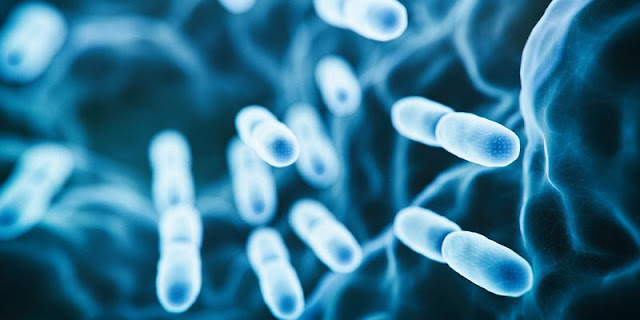Foods And Drinks Have Gotten Sweeter Over The Last Decade, And It's a Global Problem
The evolutionary predilection of humans is towards sweetness. Our ancestors used sweet foods like fruit and honey as a major source of energy.
But in the current world, sweetened foods are widely accessible, incredibly affordable, and heavily promoted. We are currently consuming too much sugar in our meals and beverages, especially added sugar as opposed to naturally occurring sugar.
The health effects of consuming too much added sugar are negative. It has been connected to dental decay, type 2 diabetes, and obesity.
Manufacturers began sweetening food with non-nutritive sweeteners as a result of these health worries. These sweeteners include both artificial sweeteners like aspartame and those derived from natural sources like stevia, and they all have a kilojoule content of zero to very little.
According to our study, which was just published, packaged foods and beverages now include far more added sugars and non-nutritive sweeteners than they did ten years ago. This is particularly true in the Asia Pacific region, which includes Australia, and in middle-income nations like China and India.
from candies to cookies to beverages
We examined the amount of added sugar and non-nutritive sweeteners marketed in packaged foods and beverages from 2007 to 2019 using market sales data from throughout the world.
We discovered that worldwide use of non-nutritive sweeteners per person has increased by 36%. Food that has been packed has 9% more added sugar.
Confectionery is most frequently sweetened with non-nutritive sweeteners. The fastest-growing food categories for these sweeteners include ice creams and sweet biscuits. Our packaged food supply has become generally sweeter during the past 10 years as a result of the growing usage of additional sugars and other sweeteners.
According to our data, added sugar use for beverage sweetening has grown internationally. However, a 50% growth in middle-income nations like China and India is partly to blame for this. High-income nations like Australia and the US have seen a decline in use.
Men should limit their daily sugar intake to no more than nine teaspoons, while women should limit their intake to no more than six. But because sugar is added to so many foods and beverages, more than half of Australians consume more than the recommended amount each day—an average of 14 teaspoons.
The use of sweeteners rather than added sugar to sweeten beverages is particularly prevalent in carbonated soft drinks and bottled water. The World Health Organization is creating recommendations for the use of sugar substitutes.
Rich and developing nations
Richer and poorer nations use different amounts of added sugar and sweeteners. In high-income nations, the market for packaged food and drinks has reached saturation. Large food and beverage companies are moving into middle-income nations in order to keep growing.
Our research shows that there is a double standard in the sweetening of the food supply, with producers offering less sweet, "healthier" goods in wealthy nations.
Unanticipated effects of control
Many governments have taken action to limit their usage and consumption in order to lessen the health risks associated with excessive added sugar intakes. Among these initiatives are sugar taxes, awareness programs, limits on advertising, and labeling.
However, in order to avoid penalties or meet the tastes of a changing population, such efforts may drive producers to partially or entirely replace sugar with non-nutritive sweeteners.
According to our analysis, non-nutritive sweeteners were significantly more frequently offered as drink sweeteners in areas with a larger number of governmental initiatives to limit sugar intake.
Why does this matter?
While the risks of ingesting too much added sugar are well established, there are risks associated with relying on artificial sweeteners as a substitute. Recent analyses reveal that non-nutritive sweeteners may be associated with type 2 diabetes, heart disease, and disruption of the gut flora despite their lack of nutritional energy.
Additionally, because non-nutritive sweeteners are sweet, consuming them affects our palates and makes us crave more sweet foods. Children, whose lifetime taste preferences are still emerging, should be especially concerned about this.
Additionally, certain non-nutritive sweeteners are ineffective at removing environmental pollutants from wastewater.
Only ultra-processed foods contain non-nutritive sweeteners. These dishes are "hyper-palatable," industrially produced, and contain components you wouldn't find in a typical kitchen. Ultra-processed food consumption is associated with increased risk of heart disease, type 2 diabetes, cancer, and mortality.
Additionally, because they consume a lot of resources like electricity, water, packaging materials, and plastic trash, ultra-processed meals are bad for the environment.
Items with sweeteners may get a "health halo" if they don't contain sugar, fooling consumers and maybe taking the place of wholesome, nutritious foods in the diet.
Put nutrition first
Unintended outcomes must be taken into account while developing policies to promote public health nutrition. There is worth in promoting legislation that takes into account the bigger picture of food, such as its cultural significance, degree of processing, and effects on the environment. Such policy should promote nutritious, minimally processed foods.
The increasing sweetness of foods and beverages as well as the rising usage of added sugars and artificial sweeteners need to be properly watched. Future dietary preferences, human and planetary health, and taste preferences are all likely to be influenced by it. The Discussion




Comments
Post a Comment